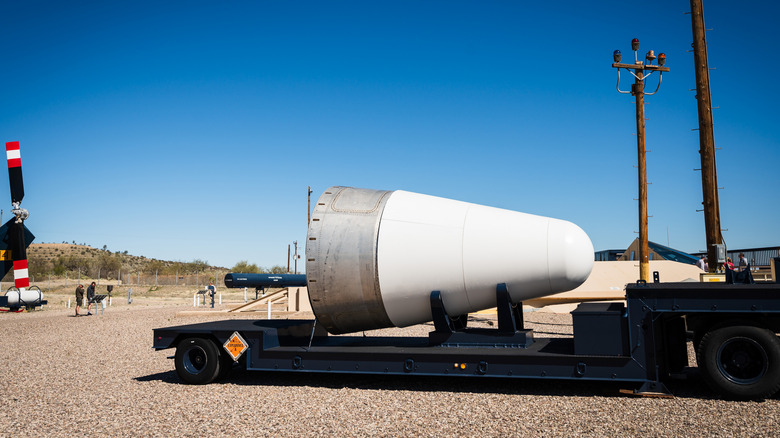The United States just launched a nuclear missile, but it was unarmed and it was a test flight. Dubbed Glory Trip 254, the test flight commenced with the launch of an unarmed Minuteman III intercontinental ballistic missile or ICBM from California’s Vandenberg Space Force. The missile traveled about 4,200 miles west and impacted within a designated missile testing range, the U.S. Army’s Ronald Reagan Ballistic Missile Defense Test Site in the Marshall Islands. “Unarmed” in this case means there was no nuclear warhead attached, and instead the missile was being fired to test the country’s readiness — to make sure they can fire as needed.
According to a press release from the Vandenberg Space Force, Lt. Col. Karrie Wray, commander of the 576th Flight Test Squadron, explained that it’s also about more than simple readiness. “It’s a comprehensive assessment to verify and validate the ICBM system’s ability to perform its critical mission,” he said. The data that will be collected during and from the test is “invaluable in ensuring the continued reliability and accuracy of the ICBM weapon system.”
What’s interesting is that the U.S. military has plans to phase out this particular missile format, the Minuteman III ICBM, by 2030. But it’s still important to ensure the systems are in working order. Gen. S.L. Davis, commander of Air Force Global Strike Command, explained, “As we modernize the Sentinel weapon system, we must continue to maintain the readiness of the existing Minuteman III fleet.” The Sentinel weapon system he’s referring to is the new LGM-35 Sentinel, currently in development by Northrop Grumman. It will replace the Minuteman ICBMs when the timing is right.
How often do these ICBM test flights happen?
The most recent test flight follows the schedule and pattern of another launched in May, 2025, where a similar unarmed missile traveled from California and followed the same flight path. While this is the second time since September that a U.S. nuclear missile test was conducted by air — that month, a submarine fired four unarmed Trident II D5 Life Extension submarine-launched ballistic missiles into the Atlantic Ocean.
In May, the Space Force said these launches are “routine and periodic,” and emphasized that these events aren’t a response to world happenings. In other words, they’re regular tests that would have been carried out regardless of what’s going on in the world. While it might seem odd the Space Force is involved upon initially hearing the news, the U.S. Space Force has been doing this for a while and carried out its first nuclear-capable missile test in 2020.
This happens several times a year with regularity to ensure the systems and the defense missiles are safe, secure, and practically capable. The United States isn’t the only country to follow these practices. Russia also tests its nuclear-ready missiles regularly. It also tested a new hypersonic ICBM back in 2018.
Notably, the U.S. Air Force maintains 400 Minuteman III ICBMs stored in a handful of states, including Wyoming, North Dakota, and Montana, with a range of more than 6,000 miles. As these systems are a critical component of the U.S. military’s defense systems it makes sense that they’d want to test them out and make sure everything works. It probably won’t come as a surprise that the U.S. military, specifically the Navy, is also working on a new nuclear supercarrier to replace its current fleet. The military is consistently working to improve capabilities whenever possible, to keep up with potential enemies and maintain its military superiority.



.png)







